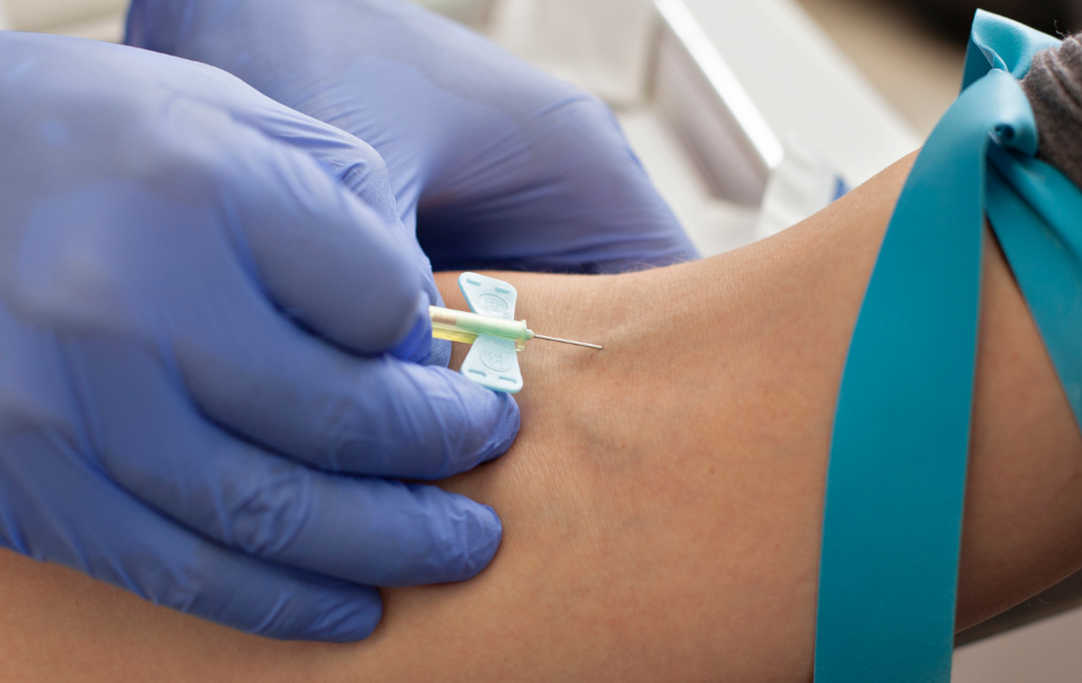
Blood Cancer Awareness Month – September 2025
September is designated as Blood Cancer Awareness Month to support patients affected by blood cancer, spread awareness, and raise funds to progress research on blood cancer. There are three main types of blood cancer — leukemia, lymphoma, and myeloma. Nearly 1.3 million people in the United States are in remission or in treatment for blood cancer. Treatment has advanced greatly over the years, increasing survival rates, but there is still a long way to go.
History of Blood Cancer Awareness Month
Blood Cancer Awareness Month is crucial for increasing fundraising efforts and awareness on blood cancer. Since the mid-1970s, survival rates have increased by 25% as a result of this ongoing endeavor.
In 2010, Congress designated September as Blood Cancer Awareness Month. Every month, an estimated 14,000 people are diagnosed with blood cancer in the United States. Blood cancer has always remained a stubborn challenge, even after first-generation chemotherapy drugs were introduced in the mid-1950s. Prevention and early detection have always posed a gap in battling the disease; the first step to close this gap was when x-rays and radiation therapies were discovered in the early 20th century. Fortunately, advancements in technology and treatment procedures since then have been helpful in detecting the disease early, which is why the five-year survival rate for leukemia has quadrupled since the 1960s.
But these advancements and statistics are broad across the types of blood cancer, whereas the real numbers outside of these statistics are not so rosy. Non-Hodgkin lymphoma is extremely deadly, and despite its growing survival rate, it is estimated that 20,140 deaths will still occur from the disease this year.
How To Observe Blood Cancer Awareness Month
Volunteer
Anyone can become a Leukemia and Lymphoma Society (LLS) volunteer. Head over to their website and apply for one of the many opportunities for volunteering.
2. Participate in events
Get involved with local events or charitable fundraisers hosted by organizations.
3. Become an advocate
Advocacy is critical for the LLS. The more people know and the disease is talked about, the better.
5 Facts About Blood Cancer Worth Knowing
Blood cancer death toll
Someone in the United States dies from blood cancer approximately every nine minutes.
The projected figure for 2020
More than 58,640 leukemia-related deaths were expected in the U.S. in 2020.
Improved survival rates
According to the Leukemia and Lymphoma Society, 66% of people diagnosed with leukemia live five years or longer.
No screening tests
As of now, there are no effective screening programs for early detection.
Three main types of blood cancer
The three main types of blood cancer are leukemia, lymphomas, and myeloma.
Why Blood Cancer Awareness Month is Important
Supports research
Blood Cancer Awareness Month raises awareness and increases the participation of affected people as well as volunteers in research. More research means a better understanding of the disease, and prevention and cure.
Supporting loved ones
We stand in solidarity with those who have loved ones affected by blood cancer, and the patients. In this challenging time, grief shared is grief halved.
Encourages early detection
Since the symptoms aren’t confirmed, blood cancer awareness month encourages people to get checkups done for possible signs of the disease, for early detection and treatment.
To learn more, visit this link.
What is Cheltenham Oaks Assisted Living?
Cheltenham Oaks Assisted Living
is a team of licensed nurses and care providers committed to enhancing the quality of living for our seniors. We do this by carefully tracking your current state of health and personal assistance needs, and work to provide you with all of the regularly scheduled care services you require to go about your life.
We are compassionate about the fact that aging and entering the latter stages of life can be challenging if not scary. That's why we strive to promote a happy, engaging community within our facility that encourages residents to engage in classes, entertainment, games, social activities, and much more.
With the help of our care providers, you and our residents can live a normal life filled with the same opportunities to experience joy, laughter, love, and friendship. Whether you require assistance with your physical, mental, or emotional health, we're here to provide.
For many, having the talk about assisted living isn't easy. Our team is always here to help you through it.
It's likely that you're researching assisted living on behalf of a parent, grandparent, or loved one. Broaching the subject of moving to an assisted living facility isn't easy for a likely reason: we all struggle to acknowledge the end of our lives.
However, there are steps you can take to ease your loved ones into understanding. You should start by acknowledging the possibilities before your loved ones are limited on options.
While your loved ones are still healthy, they are able to more effectively think about the consequences and risks of what might happen down the road. It's easier to make decisions when you have agency, as opposed to finding yourself in poor health and having no option but to go along.
Have the discussion with loved ones about "what if?" Be sure to discuss the presence of illness and what to expect later on.
